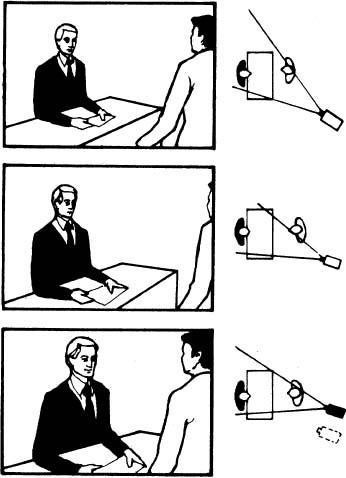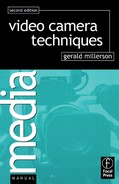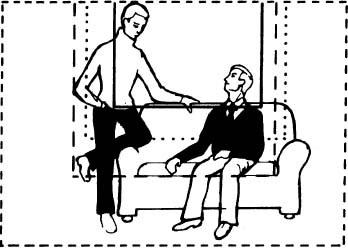Although there will always be those occasions when individuals have to make major decisions ‘on the hoof’, closely coordinated teamwork is the secret behind most first-rate producions.
How can you best fit into this team? Well, in a number of ways –
• Through your skills, accuracy, reliable operation, and dependability.
• By thinking ahead to avoid potential problems. Anticipating mechanics.
• By suggesting workable solutions when you have difficulties in getting the planned shots.
• Through flexibility. Be willing to try something, even when you are convinced that it will not work!
• By patience with repeated rehearsal, altered shots – even confusing instructions.
• By being consistent. Having a reliable memory (or make clear notes!) in order to be able to repeat shots and moves accurately.
Don’t let problem moments throw you! Perhaps you find in a live show, that there is not time for a planned move, or a shot is impracticable, or a dolly move needs to be changed. Be ready to compensate if someone is out of position (off their marks). Your initiative may prevent a disaster – but take care not to end up reorganizing the director’s treatment!
It’s not good enough to get a ‘good shot’. Only the director has an overall picture of events, and each camera needs to relate to that treatment. If Tom on Camera 1 decides that a high shot presents the subject most effectively, while Dick on Camera 2 provides a powerful low shot, and Harry on Camera 3 goes into screen-filling close-ups, the consecutive shots would not intercut! Shots have to be rationalized and related, to have continuity.
Seated in the production control room, the director is often unable to look out onto action on the studio floor, and has to rely on what the monitors reveal. When problems arise (such as a sound boom preventing a camera from moving in closer), a wide shot from a nearby camera can be an invaluable help in sorting matters out quickly.
In unrehearsed, impromptu or unpredictable situations, you may be able to offer up unanticipated shots from your viewpoint. Your solution to a problem may save valuable rehearsal time. But take care. Instead, it may frustrate other cameras’ shots, and ruin planned lighting and sound treatment!
Confirming the shot
Make sure you are getting the required shot. These are all two-shots but each has quite a different audience impact.

Correcting shots
When errors arise, do what you can to compensate. In this case the right-hand person has not walked forward sufficiently to hit the floor marks. The camera moves round to improve the shot.

